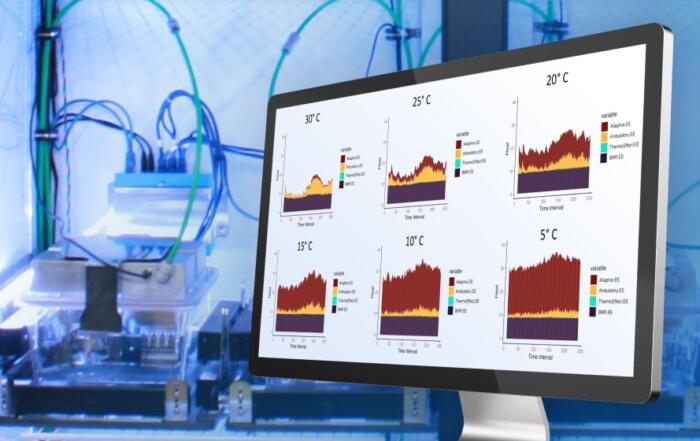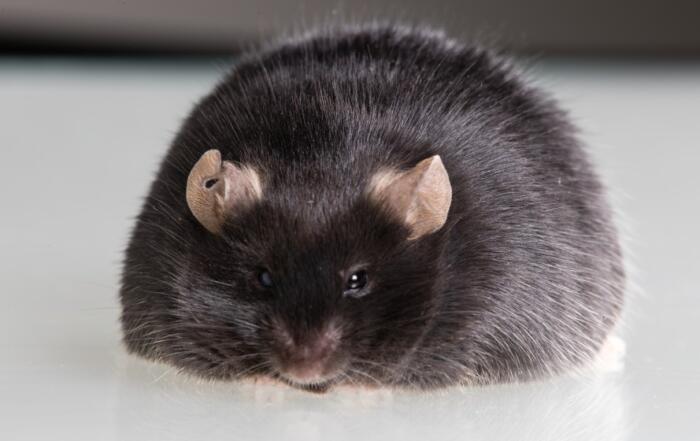In this webinar, Dr. Marc Reitman and Dr. Oksana Gavrilova discuss obesity, indirect calorimetry, and fundamental differences in the thermal biology of mice and humans.
Highlights
- Physiologic basis of obesity
- Review of indirect calorimetry for metabolic rate measurements
- Mouse models of energy expenditure
- Effects of housing density and sex differences on mouse thermal physiology
- Thermal physiology differences between mice and humans
Webinar Summary
Studying energy expenditure in mice can aid in anti-obesity drug design and development, and increase the probability of success in humans. In this webinar, Dr. Reitman addresses the fundamental differences between mouse and human physiology and identifies the conditions in which mice are an appropriate model of human physiology. Dr. Reitman also provides an overview of obesity physiology and indirect calorimetry, while his colleague at the National Institutes of Health, Dr. Oksana Gavrilova, aids in answering audience questions at the end of this webinar.
Obesity is the result of an imbalance of energy intake and expenditure. To understand this imbalance and the mechanisms that underlie it, both parameters must be accurately measured. Dr. Reitman focuses his research on energy expenditure, which includes basal metabolic rate (BMR), thermic effect of food, physical activity, and cold-induced thermogenesis (CIT), and uses equipment by Columbus Instruments in his experiments. Dr. Reitman assesses energy expenditure in mice by indirect calorimetry, which measures the rate of oxygen consumption and carbon dioxide production. Measuring both these parameters allows for the respiratory exchange ratio (RER) to be calculated, which is the fraction of carbohydrate oxidation. Indirect calorimetry can also be used to measure total energy expenditure (TEE), which should be approximately equal to the metabolizable food intake at steady state. Dr. Reitman emphasizes that while small changes in TEE (e.g., 5%) are biologically significant, they are difficult to measure; a metabolic rate difference of 10% can be more realistically detected.
“The precision of the method is [going to] tell you a lot about the biology.”
Despite the large size difference between mice and humans, their average body temperatures and diurnal rhythms are approximately the same. However, unlike in humans, body core is poorly insulated in mice, and so brown adipose tissue (BAT) is used for heat production. Furthermore, the physiology of mice is fundamentally different from that of humans, as it is oriented towards heat conservation rather than heat dissipation. Incorporating body temperature measurements can aid in the understanding of metabolic rate physiology.
Graphing TEE as a function of ambient temperature (i.e., a Scholander plot) provides a quantitative description of energy expenditure. The lowest ambient temperature on a Scholander plot is the BMR, and the area below which BMR is constant is the thermoneutral zone (TNZ). Below the TNZ, core body temperature cannot be maintained by passive mechanisms alone. The Scholander plot of a singly-housed mouse in the light, inactive phase reveals that mice are expending 42% of their energy just to maintain body temperature at room temperature (i.e., 22°C). Interestingly, fasting a mouse in a cool, quiet environment for 24 hours will reduce their body temperature, a phenomenon known as torpor.
“This is normal biology for every mouse. … This is not a mouse dying. This is normal, survival-type biology.”
Studying mice closer to thermoneutrality (i.e., 30°C) provides a better model for human biology, and is thus more predictive of anti-obesity drug efficacy in humans. As an example, Dr. Reitman discusses a study of 2,4-dinitrophenol (DNP) administered to obese mice for two months. DNP is an uncoupler that induces weight loss by making mitochondria expend more energy. When studied at room temperature, reduced BAT function was observed in obese mice, but there was no overall change in TEE, food intake, body weight, or adiposity. When studied at 30°C, slightly reduced BAT function was observed in these mice along with increased TEE. Importantly, the drug effect of reduced body fat and adiposity was also observed.
“How you study a mouse really matters. Whether you’re studying it at room temperature or … thermoneutrality, you can get very different results.”
Although wild mice live in groups, laboratory mice are typically individually housed in thermoregulation experiments to prevent mating, which also precludes other group interactions such as huddling. To assess group housing effects on thermoregulation, Dr. Reitman compared mice that were housed in groups of three with singly-housed mice. Singly-housed male mice increased their energy expenditure compared to group-housed mice, while decreasing body temperature and increasing heat conductance below thermoneutrality to compensate for the loss of huddling. Interestingly, female singly-housed mice maintained their previous body temperature by increasing their energy expenditure and heat conductance more than the singly-housed male mice. Sex differences also exist in singly-housed mice in response to fasting: male and female mice both decrease their body temperature, but undergo torpor differently. Male mice increase their torpor episode number with no change in episode duration, while the opposite occurs with female mice. Dr. Reitman notes that individual housing is more sensitive for detecting thermal physiology phenotypes than group housing.
“The huddling that group-housed mice do totally precludes the kind of Scholander analysis … that’s so useful for understanding the components of energy expenditure.”
In the final portion of this webinar, Dr. Reitman discusses the upper end of the TNZ. As ambient temperature increases in the dark, active phase, mouse energy expenditure reaches a minimum at around 33°C and increases immediately after that point. The thermoneutral point (TNP) of a mouse is defined as the discrete ambient temperature below which energy expenditure increases and above which body temperature increases; in the dark phase, this is coincident with the TNZ. In the light phase, the TNP changes diurnally; mice have a point in which regulated body temperature increase starts (around 29°C) and a second breakpoint at which regulatory mechanisms are overwhelmed, which is exactly the same TNP as in the dark phase. Humans do not have a TNP, but a TNZ ranging from approximately 23°C to 33°C during the active phase, which is a fundamental difference in thermal biology between mice and humans.
“So how should one choose a mouse experiment ambient temperature that’s most likely to predict human physiology?”
There are conflicting perspectives in the literature surrounding which ambient temperature is most likely to predict human physiology. Dr. Reitman proposes an ambient temperature between 28°C and 29°C to allow mice to use thermoregulation since they typically live below thermoneutrality, while minimizing CIT since this is minimized in humans. Dr. Reitman also suggests explicitly reporting the ambient temperature to avoid using the word “thermoneutrality” as it is difficult to achieve in a mouse. Studying mice at 30°C as “thermoneutrality” can be problematic since this point is above and below thermoneutrality during the light and dark phases, respectively. Dr. Reitman concludes this webinar by emphasizing that mice have both quantitatively and qualitatively different thermal biology than humans, and are therefore not just “small humans” when it comes to thermal biology.
Resources
Q&A
- Is the TNP/TNZ similar in different strains of mice?
- How does the home cage environment impact energy expenditure?
- How does the TNP/TNZ depend on assay conditions?
- Mice will choose a cooler spot (~25°C) in the dark in a thermal gradient. How does this relate to your suggestion to house mice at 28-29°C?
- Are differences in light and dark TNP related to differences in RER using more fat during the light cycle?
- Does increased RER indicate increased de novo lipogenesis?
- Will the TNP change if humidity changes?
- Are mice housed at thermoneutrality truly physiologically humanized?
- Are there studies that have investigated the role of ambient temperature on the efficacy of drug-induced weight loss?
- Might some flaws of indirect calorimetry explain the surprising TNP/TNZ relationship discovered?
To retrieve a PDF copy of the presentation, click on the link below the slide player. From this page, click on the “Download” link to retrieve the file.
Presenters
Branch Chief, Senior Investigator
Diabetes, Endocrinology, and Obesity Branch
NIDDK, NIH
Staff Scientist, Core Director
Mouse Metabolism Core
NIDDK, NIH










